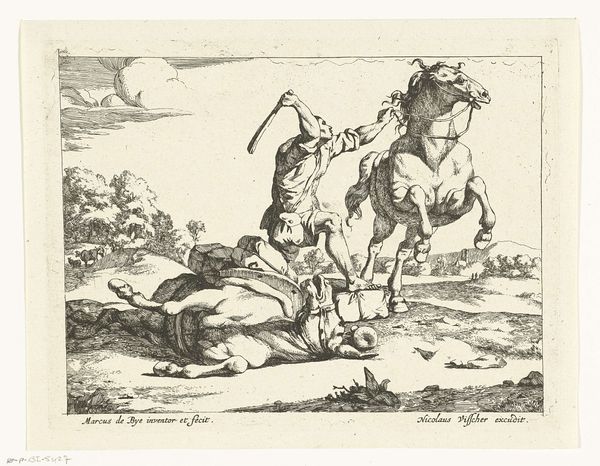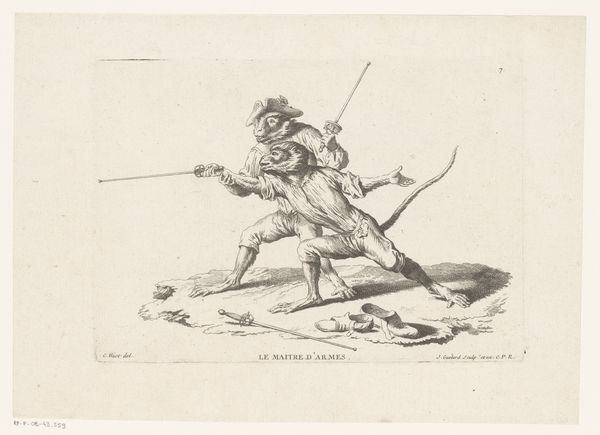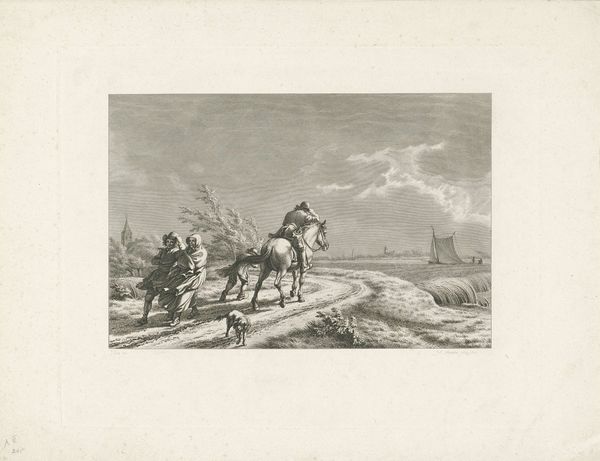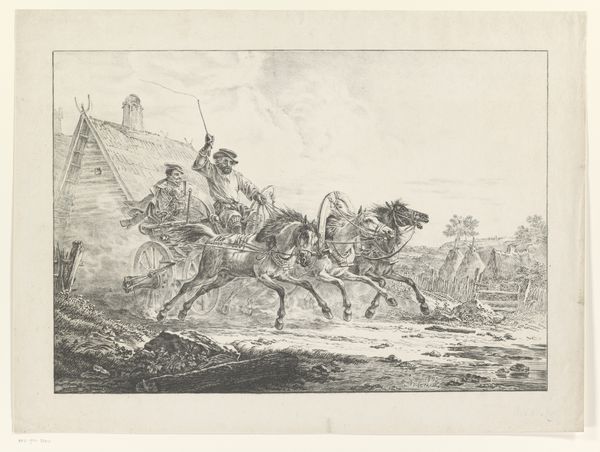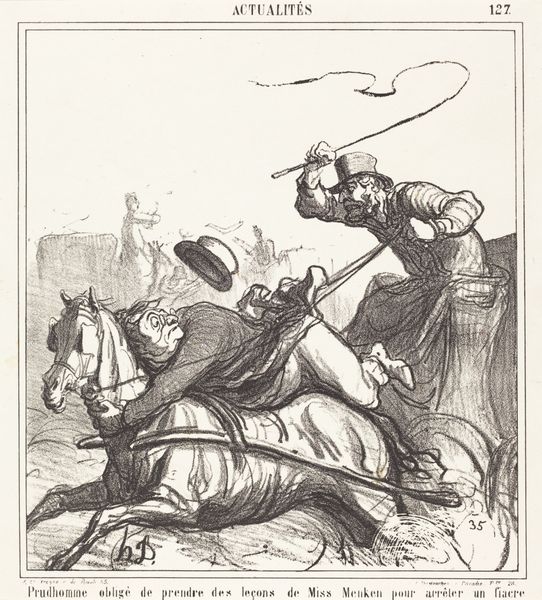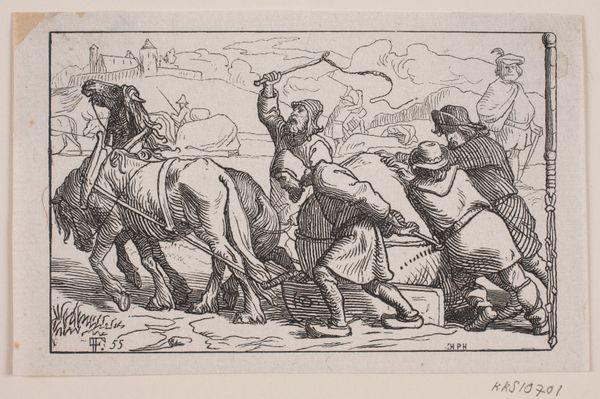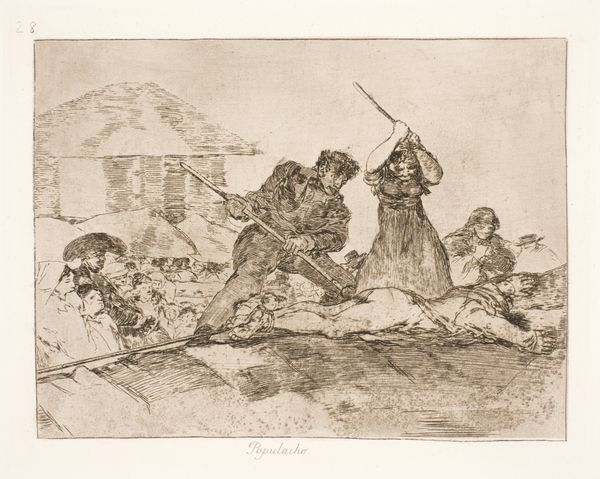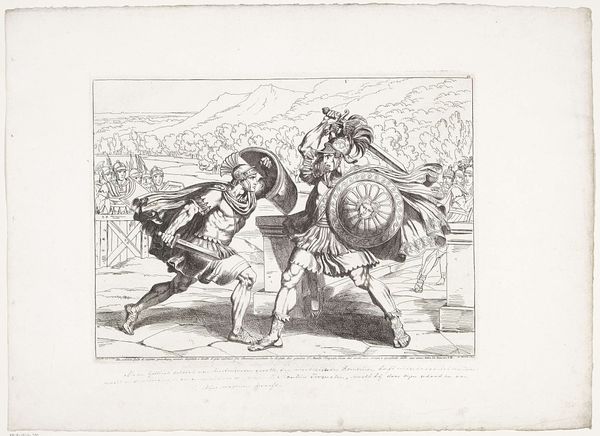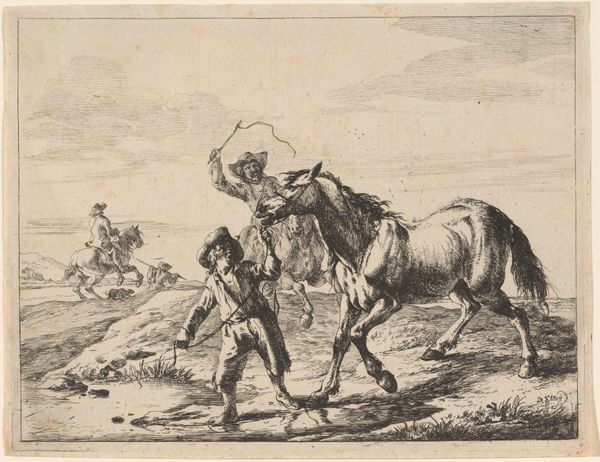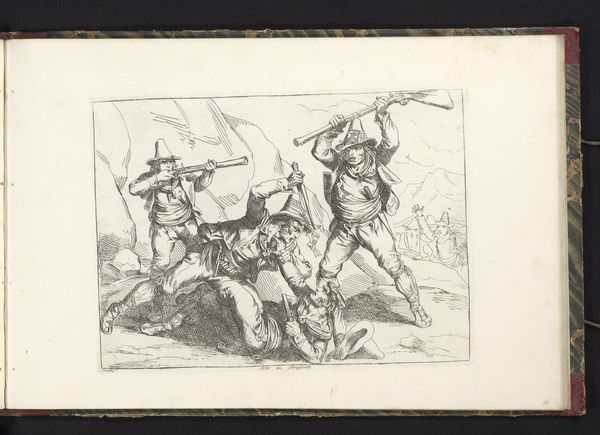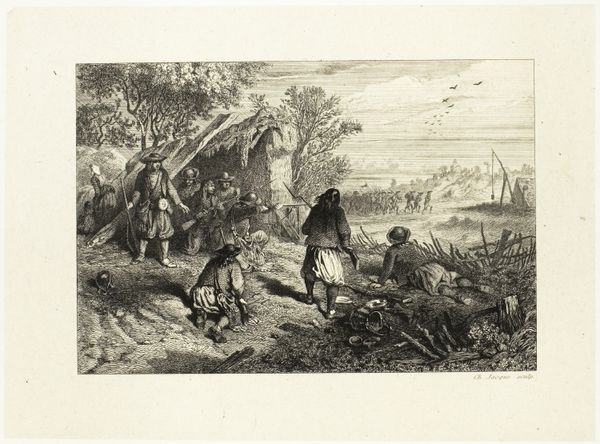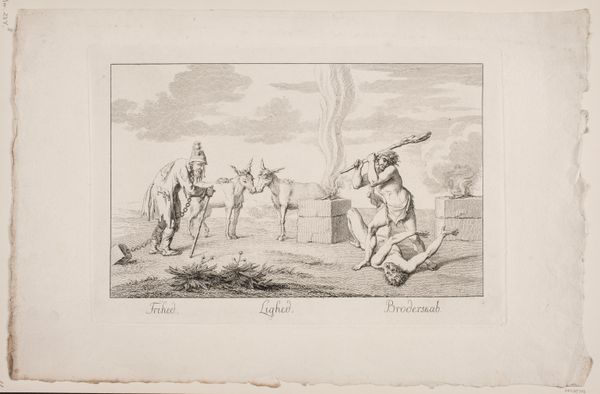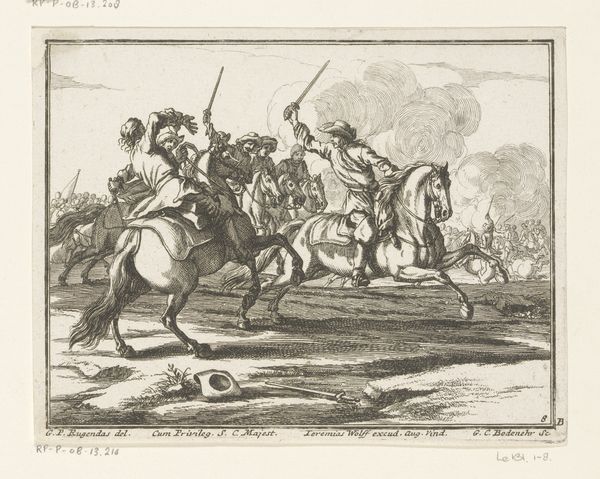
Maria van Bourgondië valt van haar paard, 1482 1853 - 1861
0:00
0:00
Dimensions: height 165 mm, width 237 mm
Copyright: Rijks Museum: Open Domain
Curator: Look at the dynamism! The way the figures are rendered suggests imminent chaos. Editor: Yes, a sense of unease. The balance feels disrupted. The piece here is “Maria van Bourgondië valt van haar paard, 1482” by Christiaan Lodewijk van Kesteren, though created much later, sometime between 1853 and 1861. It’s an engraving, currently held at the Rijksmuseum. Curator: The artist’s choice of engraving allows for a linear precision. Consider how the sharp, deliberate strokes define the contours, intensifying the dramatic impact. Observe, for instance, how the horse's mane appears almost weaponized in its expressive styling. Editor: Indeed. I'm more compelled by the labour that produces this drama. Imagine the artist, hunched over a metal plate, meticulously etching each line—the sweat, the pressure… it is the industrial mode that lets this story repeat across countless copies, shaping perceptions of the past. Curator: Precisely. That reproducibility allows the distribution of historical narratives. The formal qualities lend gravity to the event—the fall rendered with such deliberate attention that it echoes the gravity of her impending death, a dynastic shift made manifest in the physical collapse. Editor: The horse seems oddly staged in the middle ground too, almost theatrical. I’m drawn to the material narrative of this being an "old engraving style"; these are materials with a long history of narrating such historical or didactic scenes. Curator: Notice how Van Kesteren uses contrast, playing light and shadow to guide the eye. The stark whiteness where Maria’s cloak flares underscores her vulnerability, in contrast with the dense crosshatching behind it. It's about directing your emotions to certain aesthetic points. Editor: Absolutely, the deliberate creation of visual interest, with each intentional cut contributing to the final impact. I suppose its mass distribution also implies that collective consumption shapes cultural consciousness too. Curator: Yes, through art and skillful manipulation of form. Thank you for providing the important context, grounding the emotional drama through physical materiality. Editor: Thank you for tracing lines into that history. These kinds of images carry layers and multiple narratives through the material itself.
Comments
No comments
Be the first to comment and join the conversation on the ultimate creative platform.
